QuestionQUESTION: Bearded dragon 9 months old bought at Petsmart, substrate reptile carpet, basking temp 100 degrees, other end of cage 85 degrees, BD not fed crickets any bigger then the width between his eyes (they are gut loaded and dusted), 40 gallon tank (75 gallon tank ordered)Lighting is 100 watt basking lamp, UVB is compact florescent 3 months old ( I have read that they only last 6 months so I replaced at 5 months)Vegatables offered daily but he will only eat kale (which I read shouldn't be given daily)and he will eat cooked squash this is all he will eat other then crickets and mealworms. My daughter was diagnosed with Leukemia for the 3rd time and was admited to the hospital for 8 weeks came home for a week and back in for 6 weeks. BD care was verbal and written for my 25 year old son. When we came home from the 2nd hospital stay I noticed BD color was not as bright as it had been asked son if he made sure the UVB bulb was on everyday he stated he forgot sometimes I noticed he hadn't eaten the next day my daughter screamed I came flying down the steps and see ou BD standing against the glass mouth wide open and beard completely black body contorted. My daughter stated he ran around in circles then flopped against the glass I picked him up and he went limp I thought he was dieing especially when I saw blood coming out his mouth then I calmed down I am an Emergency medical tech so I deduced he had had a seizure and when he was up against the glass he had bit the humidity temp gauge and he was limp because he was postictal I held him until he was more alert and beard was closer to normal. I realized his care definitely had been substandard while we were at the hospital and it was most likely MBD. Vet was not open so I got his spray bottle and mixed powdered calcium and water and let it drip onto his snout and he would stick out his tongue for the drops. I then ran to the store for baby food (stage 1 chicken and I got squash) My daughter stated he had another seizure while I was gone. I mixed calcium with food in also and he did lap it up. I called the vet in the morning he got on the phone and I told him he said it was most likely MBD and that what I was doing was great and the only thing more he would suggest would be to replace UVB bulb with a mercury Vapor UVB bulb he said the compact ones are crap he said do what I am doing and if he shows no improvement in 24 hours to bring him in the office. It's been 2 days and no sign of any seizures I just called vet to ask how long I should continue to give calcium water and baby food and he is at a conference and will be gone a week. So I wanted to ask your advice is it safe to give him all this calcium for a week until I can talk to the vet I have researched and can not find answers about too much calcium.
ANSWER: Photos would be preferable to have. At 9 months old, MBD is a possibility, but other environmental or congenital factors as a possibility should not be overlooked. One thing I absolutely would not rule out is an acute exposure to a toxin (if your son feed something off instruction that was unsafe, on a whim...or some other possible environmental toxin such as a cleaning agent/volatile fumes, etc). I have had reports of Bearded Dragons convulsing after consumption of a single grape, from sulfite sensitivity reaction. And Bearded Dragons have been killed from ingestion of a single firefly. What you should note is whether he is trying to regurgitate, and this could give further diagnostic indication. Many baby Beardies are also HIGHLY prone to impaction, and when this occurs, paresis and ataxia is common. It often resembles a neurological problem, which abates when the Beardie defecates. What you describe could also be caused by a transient heat stress, and small reptiles kept in overly hot terrariums succumb to this quite often. Cerebral edema is the cause of death, as the brain simply gets too hot and they cannot cool down. Holding mouth agape is a attempt to cool down is a commonly seen symptom, and they often display other signs of stress, excitability, and finally severe neurological symptoms and lack of responsiveness. The smaller the reptile, the faster they heat and cool, and they are much more sensitive. Double check your environmental conditions.
Given symptoms you describe, and the diet, MBD cannot be ruled out, but the seizures and stress reaction (beard blackening) is also highly indicative of an acute trauma or toxin as well, as stated above. A mufti-faceted approach is warranted and keeping an open mind, not getting tunnel vision on MBD to the exclusion of other factors, however, you can still treat tentatively for MBD all the same, because if he doesn't already have it, I'm sure he has beginning stages given the diet and previous UVB sources used.
Compact UVB lamps are not only worthless, they are dangerous. I am currently rehabbing a lizard from photo-keratoconjunctivitis caused by such a lamp (http://youtu.be/SFePiJ_X2U4) They are inefficient by design, therefore manufacturers made up for it by reducing protective phosphor coatings inside the lamp in order to boost UV transmission, which instead have allowed for near UVC wavelengths, which are dangerous. Many reptiles have been blinded and killed by these things. Just do a websearch. For more info: http://www.uvguide.co.uk
I too would recommend a high-pressure UVB heat lamp (commonly called a "mercury vapor lamp", although all UVB lamps, whether fluorescent or spot/flood, utilize "mercury vapor" in them). At this time, my number one recommendation is the ZooMed Powersun, unless and until the TRex Active UV Heat ever returns to market and is sufficiently independently tested to be safe again. I am tentatively looking at the Arcadia brand line and they look promising. I will likely be giving them top recommendation in the near future on their UVB heat lamp (their linear fluorescent lamps already appear to be superior), however, their UVB heat lamps at this time are only available in 220v version, which means a converter would be needed to run them. Not unreasonable though if they're as good as their linear lamps seem to be.
You can see some reference of these discussions on my wall and in the notes section of my page at:
http://facebook.com/reptilerescue
I would recommend you see my wall post with the links to Arcadia lamps from March 6.
And the following article I wrote will give you some understanding on what is going on in the UVB heat lamp market. You have to be careful what you select:
https://www.facebook.com/notes/wichita-falls-reptile-rescue/the-possible-return-to-market-of-a-recommendation-worthy-uvb-mercury-vapor-lamp/385371024867759
And this article is recommended for further education on reptile lighting:
https://www.facebook.com/notes/wichita-falls-reptile-rescue/reptile-lighting-is-a-process-not-a-bulb/389934667744728
It might also be easier to work this out and maintain communication with me on my facebook page. You could also post pictures for my examination.
=========NOTICE============
One other thing I caution people about is veterinary care itself. Exotic animals are not something that MOST vets are very competent/knowledgeable with. Reptile care is not intuitive, and in many cases it is NOT the same as for mammals. Physiology is quite different in many cases. Although many things about reptile veterinary medicine are extrapolated from mammal science, and formularies worked out from there using pharmacokenetic studies, this is still an area which is not widely understood by most vets. I am inundated at times with incorrect diagnoses and treatments offered clients on their reptiles, by veterinarians who are not well researched on these animals. I recommend that you verify the vet's experience and level of success before continuing very far. For more education on that, read the article I wrote here:
https://www.facebook.com/notes/wichita-falls-reptile-rescue/selecting-a-competent-reptile-veterinarian/371766756228186
I have at least one veterinarian, and multiple wildlife rehabilitators and vet techs who follow my page.
Now as to actual treatment if this is MBD, it is likely that the compact coil lamp has been inadequate. In addition, kale contains high oxalates, which binds calcium. The Ca:P ratio is too low and oxalates too high for frequent feeding, and that coupled with a poor UVB source could indicate not only MBD, but gout or pseudo-gout. Hyperphosphatemia is likely. Unfortunately, at such a young age, he is unlikely to be large enough to safely spare the blood volume in order to render diagnostics from blood labs. The last time I treated a Beardie for such a thing, the lab required 2-3ml of blood to reliable run the tests, which even as an adult, this Beardie was too small to safely spare the blood volume.
What I do, and what is actually called for according to my research of treatment protocols (which comes from one of the best reptile medicine sources in the world - Douglas Mader) in suspected cases of MBD, is to immediately change diet to low phosphate and oxalate sources, improve UVB source quality (this will NOT show improvement in 24hrs however), and further,
>>>>before you start giving calcium supplementation<<<<
I give phosphate binders (aluminum and calcium containing binders should be avoided). The reason for phosphate binders is that if you have a hyperphosphatemic condition you can cause soft tissue (organ) calcification giving boluses of calcium. It could prove fatal.
Calcitonin may also be called for, but we are getting into things that really require blood chemistry to know where serum calcium is and about parathyroid function.
I DO NOT recommend bolus calcium injections be given, AT LEAST not until he has been on phosphate binders for several days.
Additionally, the actual protein sources should be considered. Mealworms are not that great of a food. They are typically high in phosphate, sodium, fat, and the chitin can pose a problem. Not that they can't be used, but they should be used in moderation, and smaller is always better. The same is true for crickets, however, crickets are a more nutritious food item. Wax worms and Phoenix/calciworms are slightly more nutritious than mealworms as well. You very much need to move toward better vegetable sources though. Collard, mustard, and turnip greens are superior to kale.
Unfortunately, a lot of people irreversibly mess up baby Beardies with MBD, and it's one of the reasons I flatly refuse to endorse Beardies as either a beginner species, despite what those who are in the business of selling them will tell you, or that those new to reptiles try to take on a baby. Their mortality is far too high when people acquire them for pets as babies.
---------- FOLLOW-UP ----------
QUESTION: Thank you for your prompt reply I appreciate it. We do not give our BD Kale everyday as we know it is not an approved daily food it is an occasional food. He just will not eat the other food I have tried collards, mustard greens, endive, escarole, dandelion greens he justs shows no interest in these but we still offer them to him everyday hoping that he will finally try them. He mainly gets small crickets the mealworms are given occasionaly like once to twice a month as a treat. My son stated he did not give the BD anything other then small crickets, collards and escarole and that he as usual did not touch the collards and escarole, he said that he forgot about dusting the crickets (even though I stressed the importance of this verbally and on the care sheet I wrote out) I do agree with you that beardies should not be for a beginner wish the pet stores would stop telling people they are easy. I had an anole years ago he was great and I had no problems with him of course I didn't have to depend on someone else to look after him for about 3 months either. He lived to be 7 1/2. You stated our BD should be on a phosphate binder I have looked online and I am only finding calcium and aluminum binders which you stated not to use is there a brand name that would make it easier to find? Oh and he has not regurgitated and his fecal matter is normal looking and with the new Merv vapor UVB his color is getting back to normal and he is acting more like himself.Thank you again
AnswerEven if the kale is not an everyday thing, if this is the only veggie he is eating then it is too much. The oxalates and poor Ca:P of it need to be taken as something that is working against him nutrition and MBD wise. You should try finely chopping it up with increasing amounts of other items, so that he has to eat a little of something else if he wants the kale. From there it's just a matter of weaning. You might also try some flavor enhancing items. Beardies, like most herbivores, will generally take to a fruit item. Banana is a big favorite around here, and I use it to effect with stubborn eaters because when mashed up into the salad, everything sticks to it.
A transient lapse in dusting crickets is not likely to have resulted in MBD, although it may have made a bad situation worse. The fact is that far too many people over supplement. Hypercalcemia can cause neurological disorders, organ dysfunction, seizure, and death...just the same as hypocalcemia can. Calcium is a very important mediator of so many functions in the body, and it's abused as a supplement most of the time. Dusting at every feeding is far too much in my opinion. When on a proper diet, supplements should only be needed anywhere from once a week, to a couple of times a month, if ever. This even more so goes for D3 containing supplements. D3 is more than a vitamin, it is a hormone as well that regulates calcium uptake, and a it's fat soluble one at that - which means it can become toxic pretty quickly because it's not eliminated from the body very fast. Especially in the case of a reptile, which already has low metabolic activity. And, because D3 is actually the active ingredient in a lot of rodenticides, a lot of people fail to realize just how toxic hypercalcemia can be if calcium/D3 is abused. I say, let the animal manufacture its own D3 in the body normally rather than bypass physiological processes, and you won't ever have to worry about D3 supplements. This starts with making sure you have a good UVB source, and good diet with decent Ca:P ratios of at least 2:1. Collard greens are considered superior, because they have a 14:1 ratio.
As to the phosphate binders, this is something you're going to have to see the vet for prescribing of. IF he has MBD or the beginnings of it (and I stress that the symptoms you gave could be indicative of a number of things OTHER than MBD), then the phosphate binders are pretty important. A quick run down on it - Phosphorus and calcium bind each other. Actually, calcium-phosphate is what bone is made of, and phosphate is needed by other cells in the body, so it's not a bad thing. However, what happens in an MBD case is that you've had too much phosphorus intake compared to calcium, or too little calcium absorption from either too little of it in the diet, or from too little UVB for D3 manufacture. You get low calcium, and high phosphorus content in the body (hypocalcemia/hyperphosphatemia). So, what happens when people overreact and hit the animal up with a bunch of calcium supplements to compensate? The calcium finds all that phosphate in the body, wherever it might be, and it binds to it and becomes this pretty insoluble deposit. When this happens in organ tissue and vessels, it can have disastrous consequences...which is why once Ca:P ratio has gotten so far out of whack that MBD has begun, you have to ease into the treatment the right way so you don't do more harm than good. This is why bolus injection of things like calcium gluconate is ill advised as an initial treatment for MBD, although some calcium glubionate syrup may be called for after a few days of phosphate binders. And again, PTH levels are often elevated during MBD (which is actually more accurately known as nutritional secondary hyperparathyroidism), so calcitonin is often called for to suppress the PTH as well.
My point in all this being that true cases of MBD are something that ideally need to involve treatment from a veterinarian who understands its symptoms, progression, and treatment in reptiles. And, as stated before, you also have some other potential causes I wouldn't rule out either.
One thing is for sure though, absent a blood panel, the next best thing is an x-ray to check for deposits, pathological markers such as abnormal bone growth, fractures, etc. It may be harder to interpret since he is still a juvenile, but it beats guessing blindly.
7 1/2 years is commendable for an Anole BTW. Good job. Despite what all the noobs in the pet trade say, I think Beardies are more difficult in a lot of respects. It could be a lot of congenital issues from poor genetics the way that everyone and their damn dog is breeding them at home and saturating the market with them left and right...but a lot of these cases can largely be traced back to an error in husbandry somewhere, and Beardies seem to be more sensitive to such errors than some other species.
Let me know how it turns out.
PS - I just noticed that this follow up was marked private. I have changed it to public. Please leave all follow-ups marked public.

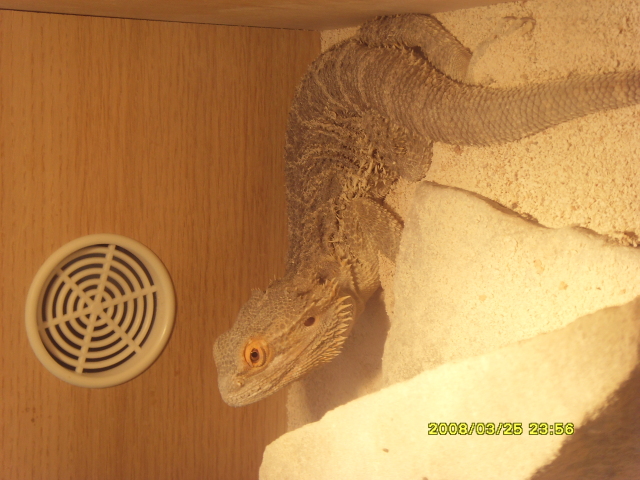 bearded dragon 2years old male
Question
spike
hi Sara i have adopted my friends beadie
bearded dragon 2years old male
Question
spike
hi Sara i have adopted my friends beadie
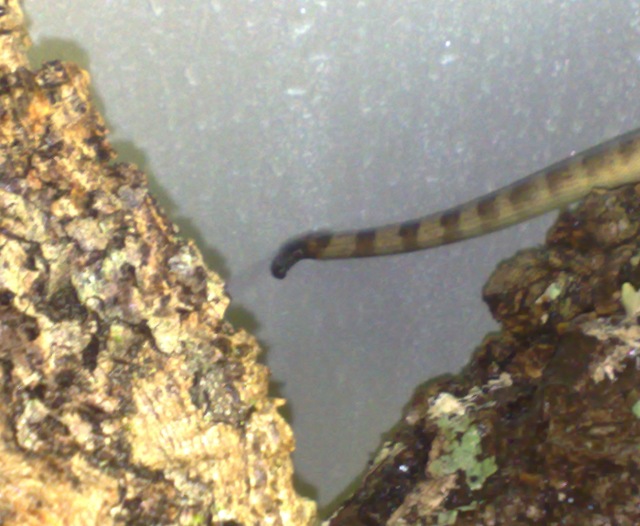 Basilisk tail
Question
basilisk tail
My green basilisk dropped his ta
Basilisk tail
Question
basilisk tail
My green basilisk dropped his ta
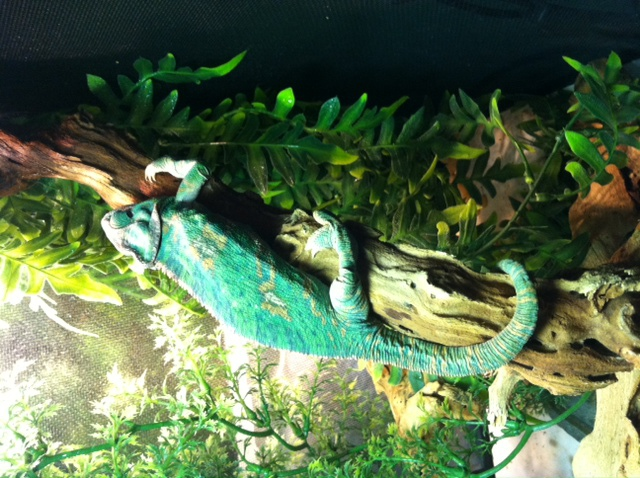 1 year old female veiled chameleon
QuestionLizzy
Lizzys Setup
QUESTION: I ha
1 year old female veiled chameleon
QuestionLizzy
Lizzys Setup
QUESTION: I ha
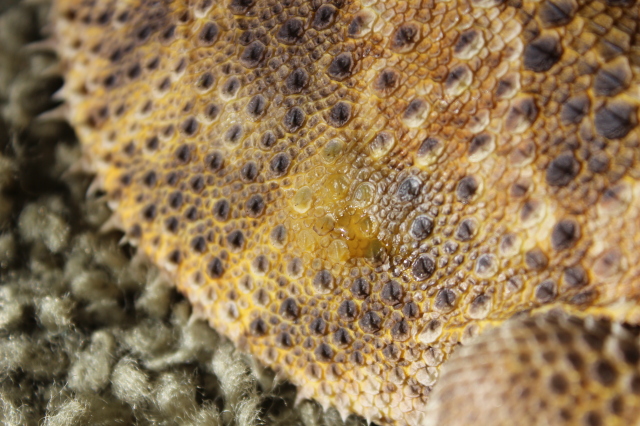 Bearded Dragon Pustule/Sore on Back
QuestionDJ Sore
QUESTION: So, the smaller of our
Bearded Dragon Pustule/Sore on Back
QuestionDJ Sore
QUESTION: So, the smaller of our
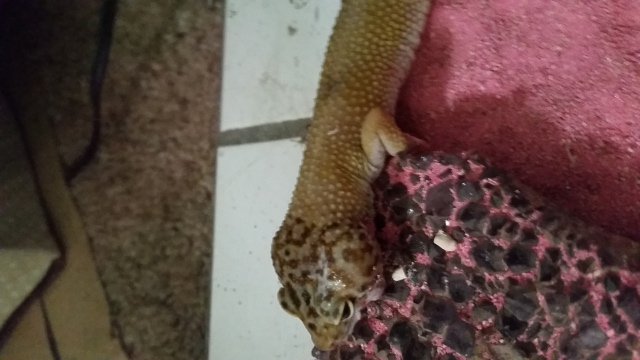 gecko
Questiongecko
QUESTION: Hello Tracie yes my geck
gecko
Questiongecko
QUESTION: Hello Tracie yes my geck